Wednesday – February 6, 2019
Officially, Cairo receives “less than 1 inch of rainfall per year, with even less recorded along the corridor of pyramids.” So imagine our surprise and dismay when we awoke to see gray overcast skies and gentle falling showers. It was also 57 degrees and windy.
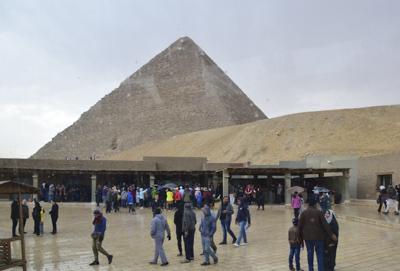
Here is a photo of the ticket area in Giza that I took from the bus. Notice the wet pavement and tourists holding umbrellas and specks of rain on the window. This must be a rare sight in Egypt!
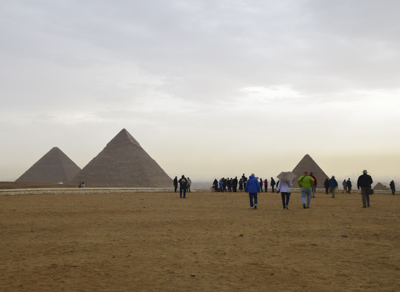
Undeterred, our stalwart group ventured out onto the damp sand wearing rain gear and carrying umbrellas. Visiting Egypt was a first-time experience for everyone. We had waited our entire extended lives and anticipated this moment with excitement to actually visit the ancient Pyramids of Giza….
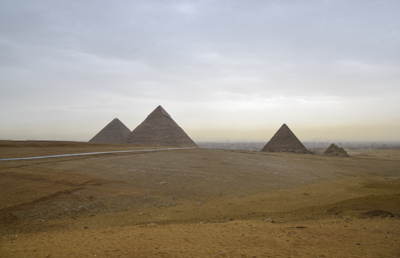
In my imagination, I had pictured a vibrant sunny day and a bright blue sky. Oh well….
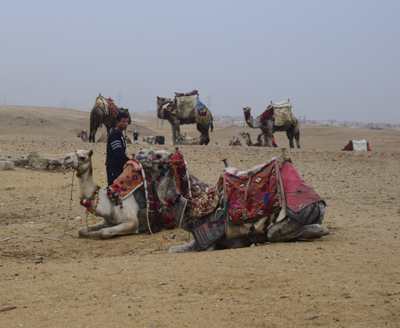
Most of the camels and camel-drivers were resting and having an off-day because there were too few tourists.





The air felt chilly and it began to rain more heavily, so everyone went to the indoor Khufu Boat Museum next to the Great Pyramid of Khufu to see the ancient “solar boat.” The ship had been deconstructed into 1224 small pieces around 2500BC and buried near the pyramids for the king to use in the after-life.

The Khufu ship is one of the oldest, largest, and best-preserved boats from antiquity. It is 143 ft long and 19.5 ft wide. It was built of Lebanon cedar and “described as “a masterpiece of woodcraft” that could sail today if put into water.” This is scale model on display at the museum:

The ship is known as a “solar barge” which was used either as a funerary barge to carry the king’s body from Memphis to Giza or a ritual vessel to carry the king and the sun-god Ra across the heavens.


Imagine seeing a fully intact 4,500 year old boat which could be used today. Amazing!
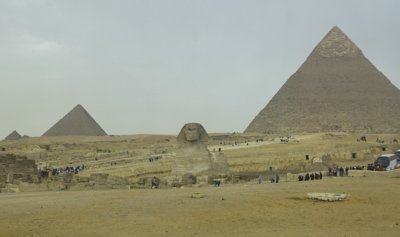
Under a soft misty rain, we rode the bus toward the Sphinx. A mythological creature with the body of a lion and the head of a person, the Sphinx statue was built to guard over the Giza plateau.

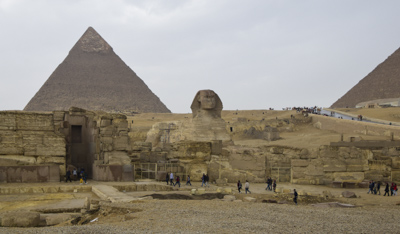
Our bus drove around to the front of the Sphinx where chairs, awnings, and speakers were being set up for night-time light and sound shows. Maged asked the restaurant owner at the site to open a gate so we could have access to a platform to take better pictures.
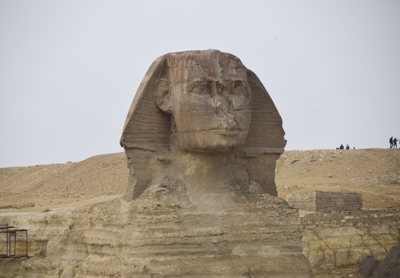
It started to rain again, so we quickly took a few more photos before running back to the shelter of the bus.
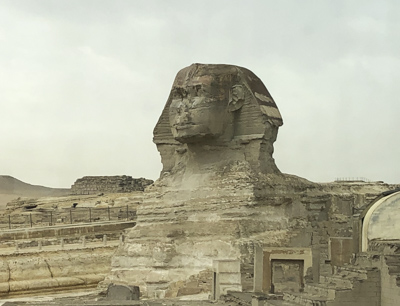
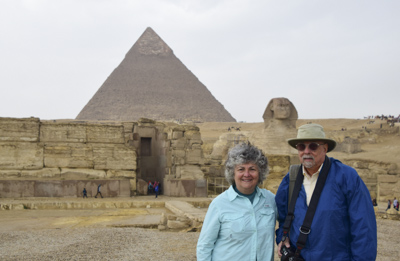

We had stops to see hand-woven carpets and to eat an Egyptian lunch. At the Akhenaton Carpets School, teams of young people sat in front of large looms. They demonstrated how to knot the fibers at lightning speed while following a printed pattern of a carpet design.

The young sisters in the photo below, invited me to sit with them and they tried to teach me how to knot the woolen yarn. It wasn’t easy!
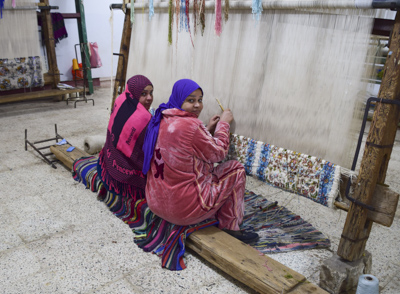
Our next major destination was the ancient burial ground of Saqqara. There are eleven major pyramids and hundreds of smaller tombs within the four mile long necropolis which served the pharaohs of the Old Kingdom capital of Memphis. The most significant structure is the Step Pyramid built for the Pharaoh Zoser (Djoser) in 2650BC. This was the earliest stone monument ever built in the world.
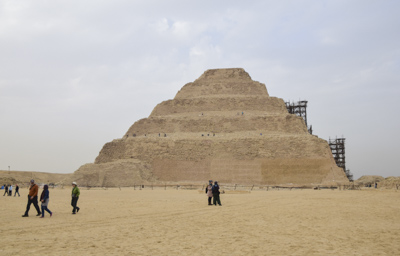
Previous royal tombs were built underground topped by a mud brick “mastaba” – which means bench in Arabic. Zoser’s chief architect, Imhotep, constructed the mastaba into a stone pyramid of decreasing ‘steps.’ All the later pyramids developed from this concept.

We went into the tomb of Kegemni dating from 2340BC which is the largest mastaba in the Saqqara complex. The walls were beautifully decorated with scenes of everyday life. Some of the color still remained on the walls. (no photography allowed)
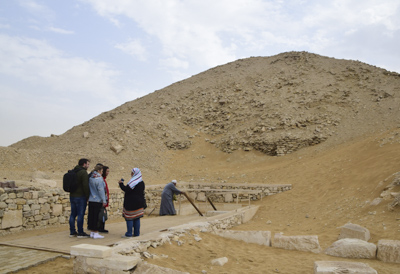
We also climbed down into another smaller mastaba and stooped along a long stone corridor. This led to two small rooms whose ceilings were decorated with representative stars that looked like yellow starfish. This tomb was not as exquisitely decorated as Kegemni’s but was an archeological experience for me.


Afterwards, we walked to the magnificent Step Pyramid complex where Maged explained the history of the compound and we were able to explore the ruins on our own.
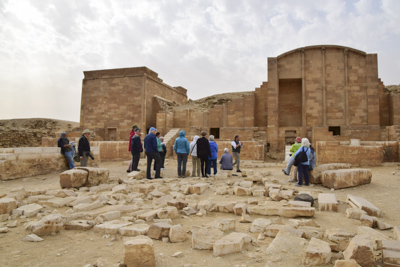
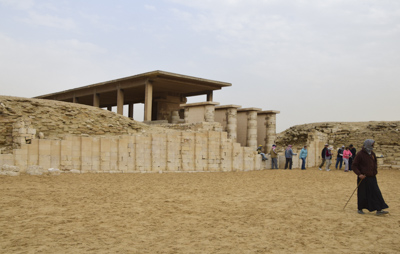

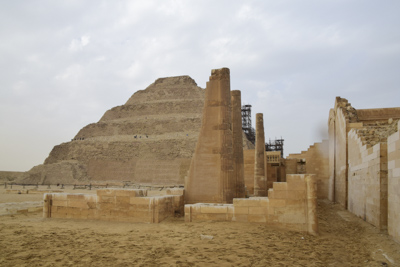
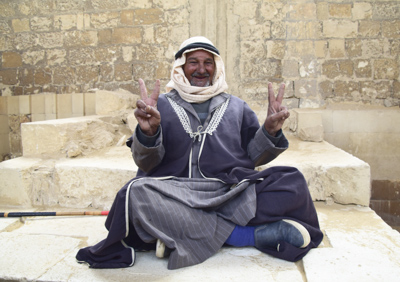
What an amazing day!!!